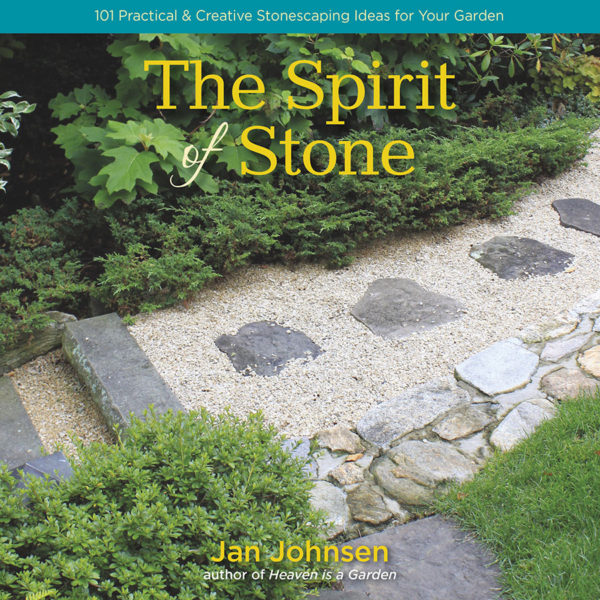Spirit of Stone Book Review
As the leaves fall, the structure of a garden emerges again. Elements such as walks, walls, seating and decorative pieces stand out as plants move into their quieter winter mode. In our formerly glacial landscape, stone is one of the best materials for creating these garden structures.
Designer Jan Johnsen’s newest book, The Spirit of Stone: 101 Practical & Creative Stonescaping Ideas for Your Garden (St. Lynn’s Press, 2017) provides a complete guide to figuring out why, how and when to use stone in your garden. Rocks and stones are underused materials in typical gardens, says Johnsen, whose early career included an extended time studying the rock-heavy gardens of Japan.
 Rocks vs. Stones
Rocks vs. Stones
Before we begin — a quick discussion of the terms “rocks” and “stones.” Many gardeners (including me) tend to use them interchangeably, but they are sometimes defined this way: Rocks are the elements we see in nature; stones are rocks that humans have placed or manipulated in some way. Others see rocks as the larger garden elements, such as the big boulders some people place near their mailboxes, while stones are the smaller, smoother rocks, such as the ones you skipped across a lake when you were a child. I’ll be sticking with stones for most of this review.
Ancient and Grounding
Johnsen, the author of Heaven is a Garden (St. Lynn’s Press, 2014), begins the book by describing how stones have been used historically as place-markers and meaningful elements in landscapes. Standing stones, cairns (basically round stone towers), and split rocks are among the ways stones spoke to ancient people—and to us. With that grounding, Johnsen describes the ways gardeners can incorporate stones in their landscapes.
She talks about designated rock gardens and the plants that grow well there, as well as many ways to use stones as a path, an edging material or a wall. While The Spirit of Stone has an abundance of inspiration and photos to illustrate the ways you can use stone well, it also includes the practical advice for selecting and installing stone elements. For instance, she explains the difference between a path and a walkway. Paths are narrower and meant for wandering, while walks are wider (she recommends 5 feet wide) and intended to connect people from one place to another. She describes and shows photos of all the different kinds of gravel you can use in a garden and, in one chapter, gives complete instructions on how to installed a stone walk with a crushed stone base with charts and photos to illustrate the process. She also offers instructions and tips for installing a dry-stack stone wall.
If you find rocks and stones speak to you and you’d like to incorporate more of them in your landscape, this is wonderful place to start. The Spirit of Stone is filled with inspiring ideas and illustrations and solid advice for making them a reality in your garden.
